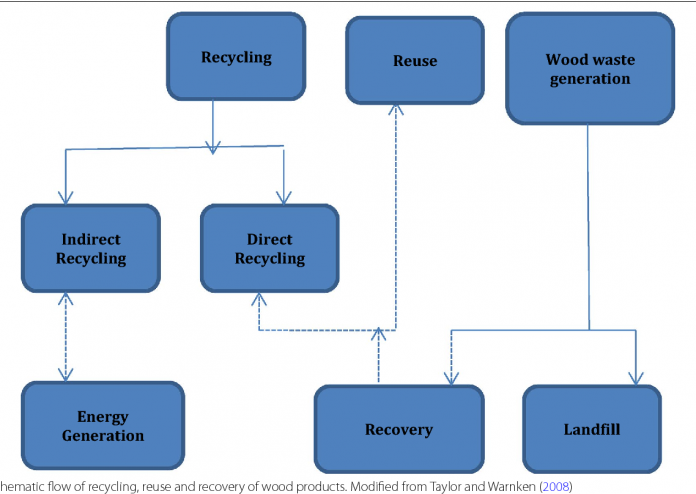As awareness of climate and environment issues increases and consumption habits change, new opportunities are opening up for the forest industry and wood construction to develop functional green solutions to meet consumers’ needs. Wood is a versatile raw material and the only renewable construction material. The manufacture of wood products and structures consumes little energy in comparison to similar products and structures made of other materials. Unlike other materials, most of the energy needed to manufacture wood products is derived from renewable energy sources. The global Timbri sector currently faces the dual challenges of meeting the growing demand of quality timber products and minimising possible adverse impacts on the environment and human health. Major sources of environmental impacts occur throughout the wood supply chain from sawmills to final products. The major objective of this paper is to explore ways to reduce the environmental impacts of timber products, from sawmills to final products. The specific objectives include the identification of major sources and mechanisms of environmental impacts from timber products, the assessment of the status of energy consumption and GHG emission in wood products during timber processing and manufacturing as well as identifying the potential ways to minimize these environmental impacts.
Amidst growing environmental consciousness and increasing demand for timber products, the importance of fulfilling growing demand for these products on the one hand, and at the same minimizing environmental impacts, is increasingly recognized. While FAO (2001) had predicted that by the end of 2020, global consumption of industrial timber products will increase by 45%, UK based sustainable real estate organization FIM, based on existing growth levels, has forecasted that global timber consumption in 2020 will be 2.3 billion cubic meters. This is an increase of 24% from the 2015 level and equivalent to a 4.4% increase per annum (FIM 2017). Moreover, The World Bank has also forecasted that global timber demand is set to quadruple by 2050 (FIM 2017). As a result, there is growing concern about fulfilling the need for increasing demand for timber products without deteriorating the world’s forest resources. Hence, enhanced insight is required into ways of improving the efficiency of timber production process, reducing wood wastage and helping the timber sector to address growing environmental challenges (Eshun et al. 2012).
Timber products are regarded as products produced from renewable and sustainable environmental resources (Klein et al. 2016). However, as other products, timber products may create various kinds of environmental impacts at different stages of the timber product supply chain, from harvesting to their disposal (Fig. 1). A major source of the environmental impacts is the consumption of energy required to produce timber products and emission of greenhouse gases (GHG) during the manufacturing process from raw materials to the final products. Although production of timber products also involves emission of carbon, forest and timber provide carbon sinks because trees consume carbon dioxide from the atmosphere through carbon sequestration (Le Quéré et al. 2009). However, the forestry sector in general, and removal of trees through deforestation contribute to up to 17% of GHG emission into the atmosphere (Miles and Kapos 2008; Baccini et al. 2012). Other forms of environmental impact associated with timber products are due to the transportation of timber products (Lindholm and Berg 2005), use of chemicals, and wood wastage (Jurgensen et al. 1997; Wootton 2012).

